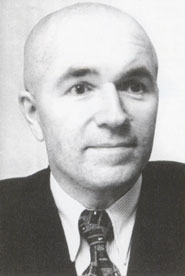Ivan Vinogradov facts for kids
Quick facts for kids
Ivan Matveyevich Vinogradov
|
|
|---|---|
 |
|
| Born | 14 September 1891 Milolyub village, Velikoluksky Uyezd, Pskov Governorate, Russian Empire
|
| Died | 20 March 1983 (aged 91) |
| Nationality | Russian |
| Alma mater | St. Petersburg State University |
| Known for | Analytic number theory |
| Awards | Fellow of the Royal Society |
| Scientific career | |
| Fields | Mathematics |
| Doctoral advisor | James Victor Uspensky |
Ivan Matveevich Vinogradov (born September 14, 1891 – died March 20, 1983) was a very important Soviet mathematician. He was one of the people who helped create modern analytic number theory. This is a part of mathematics that uses tools from calculus to solve problems about whole numbers. Vinogradov was also a leading figure in mathematics in the Soviet Union.
He was born in a village called Milolyub in the Pskov region. He graduated from the University of St. Petersburg. In 1920, he became a Professor there. From 1934, he was the Director of the Steklov Institute of Mathematics. He held this job for the rest of his life. In 1941, he received the Stalin Prize.
Contents
Vinogradov's Math Discoveries
In analytic number theory, Vinogradov's method is his main way of solving problems. He used it to estimate complex sums, especially those involving prime numbers. This method helps to simplify difficult sums into smaller, easier ones.
Solving Big Math Problems
With his special method, Vinogradov solved big math questions. In 1937, he worked on the ternary Goldbach problem. This problem asks if every odd number larger than 5 can be written as the sum of three prime numbers. His work on this problem was a major achievement.
He also used his method to study the Riemann zeta function. This is a very important function in mathematics. Vinogradov's work helped understand where this function does not equal zero. His results were so good that they were not improved for many decades.
Other Important Work
Vinogradov also used his method on the Dirichlet divisor problem. This helped him count how many whole number points are under a curved line. This was an improvement on earlier work by another mathematician, Georgy Voronoy.
In 1918, Vinogradov also proved something called the Pólya–Vinogradov inequality. This is an important result for understanding character sums in number theory.
His Life and Career
Vinogradov was the director of the Mathematical Institute for 49 years. For his long and important service, he was given the "Hero of the Socialist Labour" award twice. This was a very high honor in the Soviet Union. The house where he was born was even turned into a museum in his memory. This was a very special honor for a Russian mathematician.
As the head of a major math institute, Vinogradov had a lot of power. He was seen as an informal leader among Soviet mathematicians. However, he sometimes made it difficult for other talented mathematicians to advance their careers.
Personal Life
Even though he was always loyal to the government, Vinogradov was never a member of the Communist Party. His beliefs were more about his country (nationalistic) than about communism. This might be because his father was a priest in the Russian Orthodox Church.
Vinogradov was known for being very strong. Some stories say he could lift a chair with a person sitting on it using just one hand. He never got married. He loved his country house, called a dacha, in Abramtsevo. He spent all his weekends and holidays there with his sister, Nadezhda, who was also unmarried. He enjoyed taking care of his flower gardening. He was also friends with other important mathematicians like Mstislav Keldysh and Mikhail Lavrentyev. Their careers had started at his institute.

